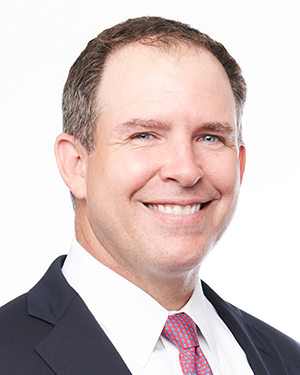Earlier this year, Blackfin Real Estate Investors acquired Mosaic at Largo Station in metro Washington, D.C. in partnership with Clarion Partners Real Estate Income Fund Inc. The acquisition of the four-story, 242-unit apartment community is a perfect example of the types of deals that Blackfin has pursued since industry veterans Andrew Buchanan and Doug Root launched the firm five years ago.
Focusing on value-add multifamily properties along the Eastern Seaboard, Blackfin has closed nearly $1 billion worth of deals under Buchanan and Root’s leadership, both serving as managing directors. Today, the Arlington, Va.-based investment shop boasts a team of 15 multifamily experts and owns and operates a portfolio of 33 apartment properties totaling more than 7,400 units.
About a year after establishing Blackfin, Buchanan and Root made the decision to launch a sister firm focused on construction management and general contracting. The company, Iron Fish Construction, enables Blackfin to execute its value-strategy and also sets it apart from other investment firms when it comes to raising money from private and institutional investors.
This Q&A has been edited for length, style and clarity.
WMRE: When you launched Blackfin, the strategy was to invest exclusively in value-add multifamily assets in East Coast markets from Massachusetts to South Carolina. Has that strategy been successful? Has it changed or evolved in any way?
 Doug Root: Years ago, we realized that value-add multifamily provides an attractive risk-adjusted return. We’re coming up on closing $1 billion in transactions, and our investment strategy is still focused on value-add. We’ve been very fortunate to assemble a great team. You can have the greatest vision in the world, but if you can’t recruit the right people to help you execute the vision it’s hard to be successful.
Doug Root: Years ago, we realized that value-add multifamily provides an attractive risk-adjusted return. We’re coming up on closing $1 billion in transactions, and our investment strategy is still focused on value-add. We’ve been very fortunate to assemble a great team. You can have the greatest vision in the world, but if you can’t recruit the right people to help you execute the vision it’s hard to be successful.
WMRE: From Massachusetts to South Carolina is a fairly large swath of the Eastern Seaboard. What markets do you feel are particularly attractive? Why?
 Andrew Buchanan: We stuck to this geography because it’s where we’ve spent our entire careers. We know the players and the markets and how to execute in them. The markets at the top of our list are at the top of everyone’s list: Charlotte, Raleigh-Durham, N.C., Richmond, Va. and Washington D.C. We also like Florida and Georgia, and we’re in the process of trying to build out our team to be successful in those locations. Our goal long-term is to be a national investor and have teams that cover all the major gateway markets across the Sunbelt.
Andrew Buchanan: We stuck to this geography because it’s where we’ve spent our entire careers. We know the players and the markets and how to execute in them. The markets at the top of our list are at the top of everyone’s list: Charlotte, Raleigh-Durham, N.C., Richmond, Va. and Washington D.C. We also like Florida and Georgia, and we’re in the process of trying to build out our team to be successful in those locations. Our goal long-term is to be a national investor and have teams that cover all the major gateway markets across the Sunbelt.
WMRE: The multifamily sector is one of the hottest and most competitive asset classes today. How is Blackfin facing competing buyers and coming out on top?
Doug Root: You throw enough darts, eventually you hit the bull’s eye. We got lucky early on, finding a transaction to get us rolling, and then we closed our second deal and built up some momentum. We’ve closed 13 deals so far in 2021. I think that makes us one of the most active buyers in the market. Every deal we’ve done so far, we’ve been able to find an angle with the broker or the seller to win the deal. We could have easily finished second every time, but we were at the right place and the right time to finish first.
WMRE: What type of investors does Blackfin target? Do you anticipate your investor base will change in the near future?
Doug Root: On the capital raising side, we’re very diversified. Our investors include private and institutional investors, from pension funds and family offices to high-net-worth aggregators that syndicate and look for operating partners. We’ve raised our own capital through our own network. Early on, a core component of our growth strategy was building and solidifying existing relationships. We’ve been at that for a bit now, and it’s bearing fruit.
WMRE: How does Blackfin attract new investors? What kind of investor outreach do you conduct?
Andrew Buchanan: We raise money on a deal-by-deal basis. We are always ready to talk to any new equity source, but it’s not a concerted effort anymore. We’re in a good spot now where equity is finding us. Today, we’re more focused on finding good opportunities and marrying them up with capital. We vet investors and determine whether they’re a good fit. We’re seeking investors that are patient and aggressive at the same time. We think you can be more aggressive if you have patient money.
Doug Root: Most of our investors are repeat clients looking for long-term appreciation and steady cash flow. They trust us and know that, because we have tremendous access to deal flow, we will show them the best investment opportunities.
WMRE: When you were establishing the relationships with institutions, did you find that that was more or less difficult than you anticipated?
Doug Root: Both Andy and I have both done a lot of institutional investing with our prior companies, and we knew what it would take to get an institutional investor to want to invest with us.
WMRE: What do you think differentiates your firm from other multifamily investors?
Doug Root: We’ve been very fortunate to bring best practices from our institutional backgrounds to our businesses and assemble a team with a similar mindset. When we first started, we were like every other value-add owner-operator. But today we have Iron Fish. The investor world, especially institutions, is hungry for an owner-operator that also brings sophisticated reporting and construction execution.
WMRE: Can you tell us a little bit more about Iron Fish? What compelled you to launch a general contracting/construction firm?
Doug Root: We launched Iron Fish in July 2017. We were in the right time at the right place and had the opportunity to partner with Forest Dalton, who is a 30-plus year veteran in the general contractor industry. We needed construction expertise to grow our business, and he was looking to make a career change. We felt like we could complement his construction knowledge with business, operations and accounting experience to group a sustainable GC business.
WMRE: Does Iron Fish only work on Blackfin’s behalf or does it take on other clients?
Doug Root: No. Iron Fish services over a 100 institutional owners and operators.
WMRE: How has Iron Fish changed your investment strategy and returns?
Doug Root: The major difference is that it now allows us to pursue more complication renovation and deferred maintenance projects that we might struggle with if we didn’t have the depth of construction expertise that we now have in house.
WMRE: How do investors respond to the knowledge that you have Iron Fish as a partner? Do you think it makes you more attractive to investors, particularly institutional?
Doug Root: Being able to control the construction execution is a huge draw and confidence booster for both existing and potential investors. It is one of the biggest risks for the investments that we make, and they feel confident that our budgets are accurate and that we can deliver on the business plan.
WMRE: How does Blackfin communicate and keep the conversation going with its existing investors to make sure you’re on the same page regarding strategy, targeted returns etc.?
Doug Root: We check in with our investors regularly. There’s not a day that goes by when we’re not in discussions with our investors. With new opportunities, we communicate more frequently.
WMRE: What role does technology play at Blackfin, specifically as it relates to communicating with investors, raising money, managing your properties and sourcing acquisitions?
Andrew Buchanan: We have an investor portal that is more for the syndication deals. It tracks all the K-1s. We’re reaching out to those folks once a quarter, and with our institutional partners, we have bi-weekly calls.
WMRE: What is the most common way that you structure deals?
Andrew Buchanan: Every deal is in a separate JV, and we’re the GP. We put in 5 to 10 percent of the equity and raise the LP capital.
WMRE: What is the range of returns that you expect on your investments?
Doug Root: We’re looking for 12 percent to 18 percent deal-level returns, depending on the risk and the amount of leverage, as well as the hold period. We’re finding good risk-adjusted returns in each of those buckets.
WMRE: What is your average hold period? Does it range from deal to deal or is it standard?
Andrew Buchanan: On average, it’s three to five years. Given the nature of what we do—renovate and reposition—it’s best to be flexible with the hold period.
WMRE: What kind of leverage do you usually put on a deal?
Andrew Buchanan: Generally, we put between 60 and 75 percent LTV. Our lender relationships are important, but it’s the terms that win at the end of the day. Most of our loans are with the agencies [Fannie Mae and Freddie Mac], and debt funds have been super competitive. We haven’t done any CMBS [deals] because we haven’t found them to be competitive.
WMRE: How has the pandemic impacted your investment strategy, as well as your existing portfolio and your relationship with investors?
Doug Root: We’ve been very fortunate to be able to grow at a very aggressive pace throughout this time. I think a lot of it has to do with being in the multifamily sector. Right now, there’s a huge shift out of other sectors into multifamily. This capital shift has, in some ways, made it more difficult for us because there’s so much more capital competing for the same deals. But it’s also been great because new investors have come into the multifamily space and wanted to align themselves with groups like ours. Operationally, it’s been a lot more challenging, not only from managing the corporate office and putting protocols in place to make sure everyone’s safe, but also managing properties and collections. It has definitely added workload to our asset management team and changed how we approach what we do.
WMRE: What has been your biggest failure in launching and growing Blackfin?
Andrew Buchanan: Knock on wood, right now the biggest failure was using fixed-term debt on some of our deals, especially when interest rates have dropped so precipitously. We thought we were smart when we did it. Who could have predicted the pandemic and where interest rates have gone? The flipside is that spreads could have blown out, and we could have been absolutely demolished.
WMRE: When you launched Blackfin, you’re quoted as saying that a fund or funds could be Blackfin 2.0. Are you ready for funds?
Andrew Buchanan: The short answer is no. We think there’s better long-term success for the firm without using funds. At this point, we find one-off joint ventures are better for us.





